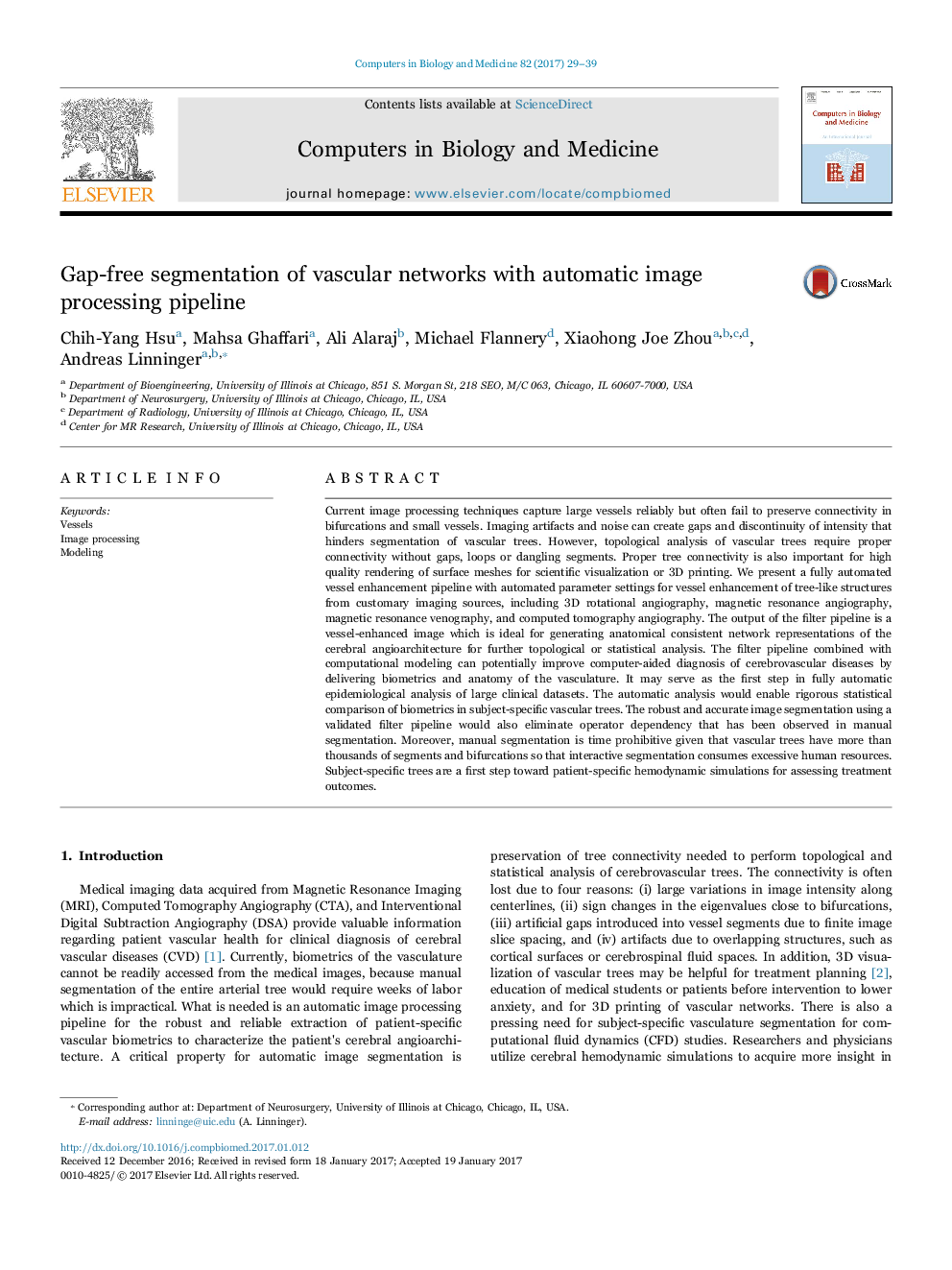ترجمه فارسی عنوان مقاله
تقسیم بندی بدون شکاف شبکه های عروقی با خط لوله پردازش تصویر اتوماتیک
عنوان انگلیسی
Gap-free segmentation of vascular networks with automatic image processing pipeline
| کد مقاله | سال انتشار | تعداد صفحات مقاله انگلیسی |
|---|---|---|
| 152243 | 2017 | 11 صفحه PDF |
منبع

Publisher : Elsevier - Science Direct (الزویر - ساینس دایرکت)
Journal : Computers in Biology and Medicine, Volume 82, 1 March 2017, Pages 29-39
ترجمه کلمات کلیدی
کشتی ها پردازش تصویر، مدل سازی،
کلمات کلیدی انگلیسی
Vessels; Image processing; Modeling;

